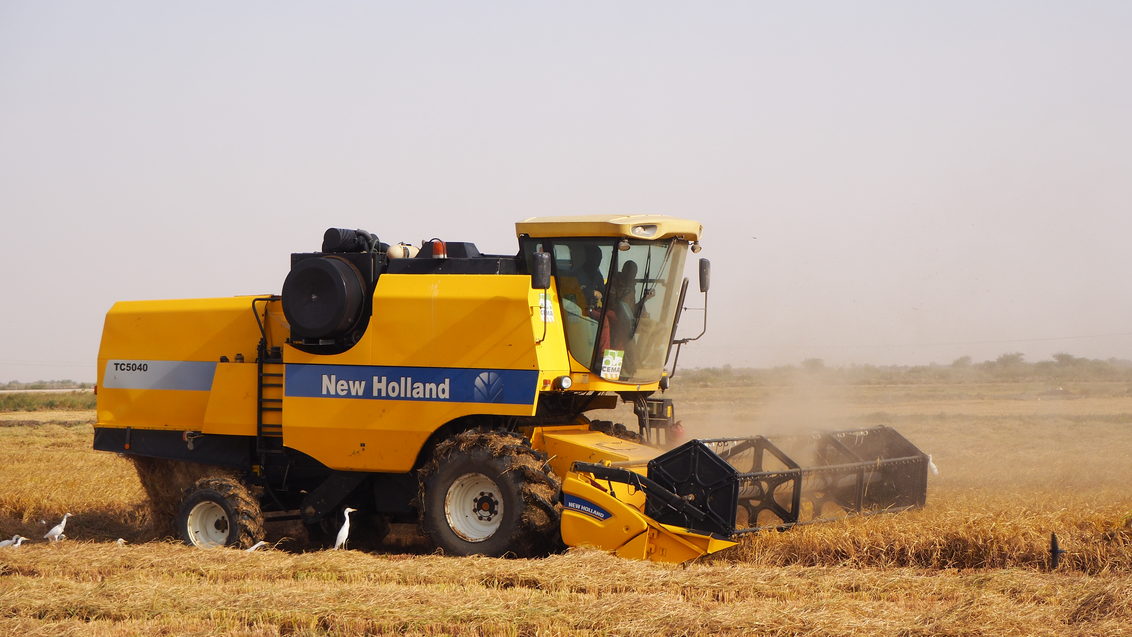Where better soils mean cleaner lungs

Burning stubble is quick and dirty – with the emphasis on dirty. A special sowing machine avoids the need for fires and can raise yields of the following crop. Our Indian Agri-Entrepreneurs are helping spread its use.
Amid the current terrible pandemic news from India, it’s easy to overlook a recurrent respiratory risk there. Every autumn, a brown haze envelops the residents of New Delhi and neighboring regions. It drifts down from northern India, where farmers burn crop residues. Known as the ‘Atmospheric Brown Cloud’, this pollution causes respiratory illnesses in thousands of people. The culprit is rice.
Residue-burning is age-old practice. All over India, farmers prepare their fields this way for the next planting season. In 2020, growers in Haryana and Punjab alone burned an estimated 23 million tonnes of rice stubble. Neither of these states has a long rice-growing tradition. Over recent decades, however, farmers began cultivating a kharif (monsoon season) rice crop. This enabled them to benefit from the government’s minimum support price. Farmers started to earn steady incomes with rice. Today, over 80% of arable land in Punjab and Haryana is under paddy cultivation.
High production and good income came with a catch, however — the straw left behind after harvesting. Farmers want this out of the way so they can sow the next crop, typically wheat, soon afterwards. To ensure ‘clean’ fields, farmers began setting the straw on fire. This quickly clears space for planting, but it is a significant source of air pollution.
Fortunately, scientists soon realized that a solution lay in the problem itself – the rice. Many nutrients such as potassium, sulfur, nitrogen and several micronutrients are lost in paddy farming, but retained in rice straw. Burning this deprives the soil of these much-need elements.
Researchers at Punjab Agricultural University in Ludhiana developed an answer. The ‘Happy Seeder’ is a sowing machine that works in rice stubble. With it, farmers can ensure that the straw is cut, wheat is sown, and the straw then distributed as mulch. “The straw helps the soil retain the moisture required for wheat germination”, explains Sharan Ghai from the Agri-Entrepreneur Growth Foundation (AEGF). “It decomposes naturally over time. After years of design enhancement and development, the Happy Seeder is now an ideal way to address the stubble issue.”
Clear benefits and better access
Syngenta Foundation India employees have asked Punjab Agri-Entrepreneurs (AEs) about their experiences. The AEs say using the Happy Seeder increases productivity. 24-year-old Kulbir Singh readily adopted the machine when government subsidies put it within his reach. “Our wheat crop yield increased, the ground remains more porous, and water doesn’t stand or become stagnant in our fields,” he reports. Fellow AE Jagdeep Singh had always sought a sustainable alternative to stubble burning. He was drawn towards the Happy Seeder when he heard it could improve soil health. He discovered that incorporating residues into the soil acts as a growth supplement. This approach has made his farm more fertile and improved yields.
“Convincing farmers remains a challenge, however”, comments Sharan Ghai. “The Happy Seeder has been around for a while. But its list price is 160,000 rupees. That’s more than $2100, way beyond smallholders’ pockets.” To promote wider adoption, the Punjab government pays half the price for individual buyers or 75% for farmer groups. “The remaining 25% is a price several AEs say they can afford”, Sharan says. The AEs then make the machine available for local use.
The Syngenta Foundation and AEGF, which it co-established, both want farmers to apply sustainable agricultural practices. “We see the Happy Seeder as an ideal alternative to the rightly dreaded stubble burning”, declares Sharan. “It increases soil productivity while reducing post-harvest climate impacts. The environment benefits, and so do both farmers and New Delhi!”
